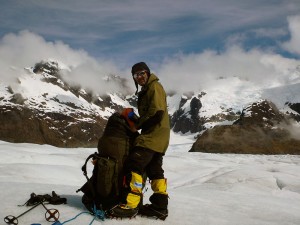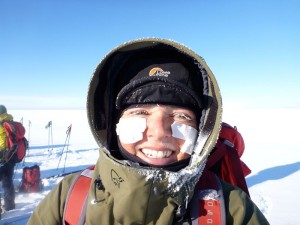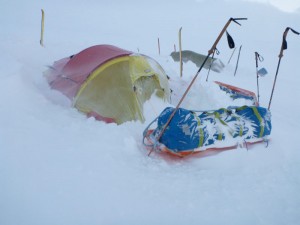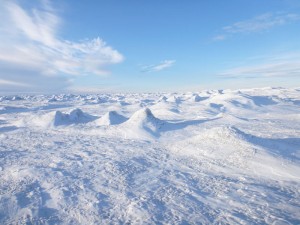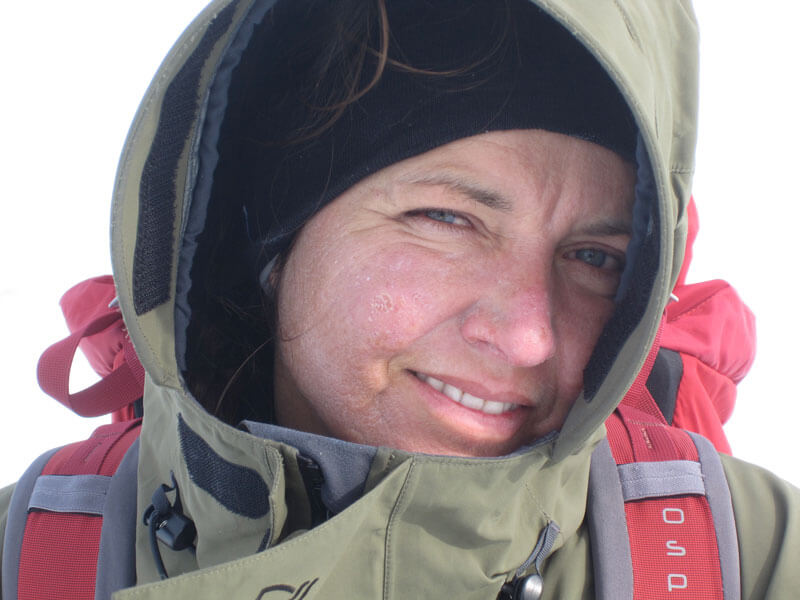
The dream of a long and hard route in Antarctica, and expedition to the South Pole, are now being realized. Planned start date for the expedition is October 2017.
106 years after this route was travelled by Roald Amundsen for the first time, I’m planning and working towards being the first woman to travel his route to the South Pole without any technical support or placed out depots.
The length of the expedition will be approx 2050 km, and duration will be approx. 80 days. We will kite and skisail the first 700 km to get out to our startingpoint at the coast, where Framheim once was. From there we will drag our equipment in our pulks (sleighs) We will have one depot at the «dropoff point» by Axel Heiberg.. All together each of us will have a starting weight of approx. 160kg (353lbs).(equipment, food, fuel)
On the way back in Amundsens route. We’ll be skiing and pulling the pulks by our own force.
Our main challenges will be the low temperatures, wind, altitude and crevasses.
In this area the average temperature is -30° to -40° degrees Celcius (-22° to -40° degrees Fahrenheit). The wind chill factor can make the real temperature as low as -70C (-94F). It’s known to be strong downcurrents, especially on parts of the Axel Heiberg glacier and it’s plateau.
We will travel through several areas with big and dangerous crevasses, and this requires thorough preparations for the expedition.
From the Ross Barrier (altitude 600-700m (2000-2300ft.)) the route will go up to the Axel Heiberg glacier at approx. altitude 3000m (9850feet). This altitude is similar to 4200m (14000 feet) in the Himalayas. The thin air contains only 70% Oxygen at these hights, and we must take precautions to avoid altitude sickness.
Planning and preparation has started, and in my team I have some of the worlds most experienced people with knowledge of expeditions in harsh environments and extreme climatic conditions.
They have all experience from tough and demanding Polar expeditions.
See www.ousland.no and the CV’s of Børge Ousland, Lars Ebbesen and Bengt Rotmo.
In may aspects the expedition will be quite unique.
The expedition is long and demanding, and is rated as one of the most challenging routes in Antarctica.
This is why only a few people has traveled this route earlier.
We have to use wind sails/ kites to get out to the coast, and the starting point. (700 km) This means 15 more days on the ice, before we can start our journey in the footstep of Roald Amundsen. This will add to the challenge factor. It’s considered almost impossible to accomplish.
It’s a historic route as it was the first route used to reach the South Pole.
This will be the first time a woman sets out to travel this route and succeeds. I find it’s time to challenge this now – 106 years after this route was first used.
I wish to set a new standard for nutrition, physical endurance and mental strenght, and that’s why I collaborate with experienced people in these areas.
If we succeed, this expedition will go into the history books of Polar Expeditions.

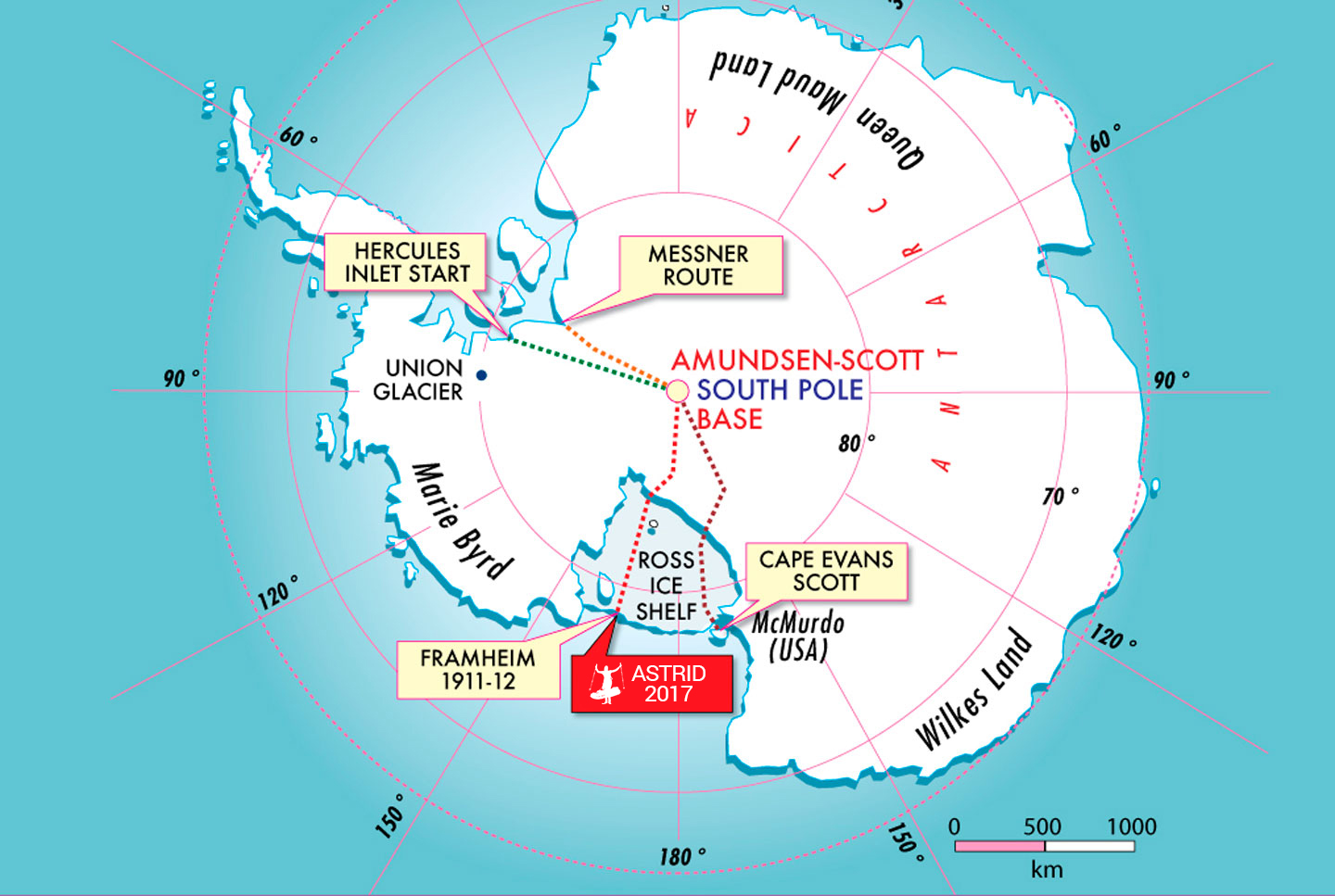
About Roald Amundsen to the South Pole:
Roald Amundsen and his men were in 1911 the first people to reach the South Pole.
Roald Amundsens men were Sverre Hassel, Oskar Wisting, Olav Bjaaland and Helmer Hansen.
They started the journey on October 19th 1910 from Framheim by the Ross Sea,
and brought along 52 dogs.
They reached the South Pole on December 14th 1911.
Here they put up a tent with the Norwegian flag, and a small pennant with the name FRAM written on it and called it Polheim.
Amundsen writes:
In the tent – in a small bag – I left a letter addressed to H.M. the King with information on what we had achieved. The trip home was long, and many things could happen to us preventing us from being able to tell the story about our expedition. Along with this letter I wrote a short epistle addressed to Scott whom I assumed would be the first person to find this place.
Scott found it on January 17th 1912. The letters were later found in the tent where Scott and his men ended their journey.
Amundsen and his men returned to Framheim on January 25th 1912 with 11 dogs after a 99 day long journey over the ice.
Here the vessel FRAM returned to pick them up, and they strated the long journey back to sivilisation to announce to the world that the South Pole had been reached.
About Antarctica:
It’s the coldest, most windy and driest continent on Earth, and contains 90% of all Ice on our planet.
The continet is approx. 14 million km² ( 5405430 mi² ) and larger than Europe.
Most of the continent is covered by a thick glacier, but there’s also several mountain ranges with peaks as high as 3000 metres (9900 feet ).
The average temperature is -60C (-78F) in the highest areas and approx. -10C (14F) in the costal areas.
The coldest temperature ever measured in Antarctica was -89,6C ( -129F)
When the cold winds from the plateau sweeps down towards the coast, they can cause great snow storms with high winds.
Amongst the wildlife you’ll find large colonies of penguines and sea birds. In the ocean one finds several different types of seal, and in the summer the the oceans surrounding Atntactica is visited by whales.
The Antarctic area is well suited for studies on global environmental changes, like climate, ozon reduction in the atmosphere and environmental toxins.
The area is a global reference area and can help us get answers to the many questions regarding environmental changes that influences on man kind today.
